
NEURORADIOLOGY
Scope & Guideline
Exploring Innovative Frontiers in Neurology and Radiology
Introduction
Aims and Scopes
- Neuroimaging Techniques and Innovations:
The journal frequently publishes studies on novel neuroimaging methods, including MRI, CT, and PET scans, emphasizing improvements in imaging quality and diagnostic accuracy. - Clinical Applications and Outcomes:
Research articles often explore the clinical implications of neuroimaging findings, particularly in relation to treatment outcomes for various neurological disorders, including stroke, tumors, and vascular malformations. - Interventional Neuroradiology:
There is a strong emphasis on interventional techniques, detailing procedural advancements, device innovations, and outcomes related to endovascular therapies for conditions like aneurysms and vascular malformations. - Artificial Intelligence and Machine Learning:
The journal highlights the integration of AI and machine learning in neuroimaging, focusing on their potential to enhance diagnostic processes and predictive modeling for patient outcomes. - Pediatric Neuroimaging:
A notable area of focus includes pediatric neuroimaging, examining unique conditions affecting children and the implications of imaging findings in this population.
Trending and Emerging
- Multimodal Imaging Approaches:
There is an increasing trend towards multimodal imaging studies that combine different imaging techniques to provide more comprehensive insights into neurological conditions and enhance diagnostic precision. - Neurovascular Disorders and Interventions:
Research focusing on neurovascular disorders, particularly related to acute ischemic stroke and aneurysm treatments, is gaining momentum as new interventions and technologies are being developed. - AI and Computational Imaging:
The application of artificial intelligence and machine learning in neuroimaging is rapidly expanding, with studies exploring their role in enhancing diagnostic accuracy and automating image analysis. - Functional Imaging and Cognitive Studies:
Emerging themes include the use of functional imaging techniques to study cognitive processes and disorders, highlighting the neurological underpinnings of various cognitive impairments. - Patient-Centered Imaging Protocols:
A trend towards developing patient-centered imaging protocols, focusing on personalized approaches to imaging based on individual patient needs and conditions, is becoming more prominent.
Declining or Waning
- Traditional Imaging Techniques:
There is a noticeable decline in studies focusing solely on traditional imaging techniques without the integration of advanced methodologies or interventional approaches, as the field shifts towards more innovative practices. - Basic Neuroscience Research:
Research articles that purely address basic neuroscience without direct application to imaging or clinical outcomes seem to be decreasing, indicating a shift towards more applied research. - Generalized Case Reports:
The journal has seen a reduction in the publication of generalized case reports, favoring more comprehensive studies that provide broader implications or insights into clinical practices.
Similar Journals
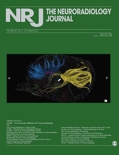
Neuroradiology Journal
Advancing the frontiers of neuroradiological science.Neuroradiology Journal is a prominent publication in the fields of medicine, neurology, and radiology, published by SAGE PUBLICATIONS INC. Located in Italy, this journal has been a key resource since its inception in 2006 and continues to showcase vital research up to 2024. With an ISSN of 1971-4009 and an E-ISSN of 2385-1996, it provides an open platform for groundbreaking studies, effectively bridging clinical practices and advancements in imaging techniques. Holding a respectable position in Q3 of the 2023 category rankings for medicine, neurology, and radiology, the journal caters to a diverse audience of researchers, professionals, and students, driving innovations in neuroradiology and influencing best practices worldwide. Although not an open-access journal, it remains accessible through various subscription options, ensuring that significant findings are distributed widely within the medical community. Stay informed on the latest research and trends that continue to shape the landscape of neuroradiological science through Neuroradiology Journal.
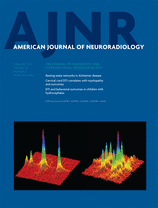
AMERICAN JOURNAL OF NEURORADIOLOGY
Empowering Clinicians with Cutting-Edge Neuroradiology ResearchAMERICAN JOURNAL OF NEURORADIOLOGY, published by the American Society of Neuroradiology, is a premier peer-reviewed journal dedicated to advancing the field of neuroradiology. With an ISSN of 0195-6108 and an E-ISSN of 1936-959X, the journal serves as a vital resource for clinicians, researchers, and students in the realms of neurology and radiology. With a commendable Q1 ranking in multiple categories including Medicine (Miscellaneous), Clinical Neurology, and Radiology, Nuclear Medicine and Imaging, it remains at the forefront of scholarly communication since its inception in 1980. The journal enjoys significant visibility, ranked #47 out of 333 in radiology and #81 out of 400 in clinical neurology, highlighting its impact within these competitive fields. Although it is not open access, AMERICAN JOURNAL OF NEURORADIOLOGY is committed to publishing innovative research that enhances clinical practice and informs neurological imaging techniques, making it an essential read for anyone involved in the advanced study of neuroradiology.

Journal of NeuroInterventional Surgery
Shaping the Future of NeuroInterventional Medicine.The Journal of NeuroInterventional Surgery, published by the BMJ Publishing Group, stands at the forefront of advancing knowledge in the fields of neurointerventional procedures, neurology, and surgical techniques. With an impressive impact factor reflective of its high-quality contributions, this journal occupies a prestigious position within the Q1 category across multiple domains: Medicine (miscellaneous), Neurology (clinical), and Surgery, ranking 11th in Medicine Surgery and 47th in Neurology Clinical out of their respective categories per Scopus metrics. Since its inception in 2009, it has provided an essential platform for researchers, clinicians, and students to disseminate innovative findings and engage with groundbreaking developments in neurointerventional practices. As a prominent publication in the United Kingdom, located at British Med Assoc House, it is committed to open communication within the community, fostering collaboration, and setting the stage for future innovations in patient care and outcomes.

Clinical Neuroradiology
Exploring the Nexus of Neurology and Radiology.Clinical Neuroradiology, published by SPRINGER HEIDELBERG, is a leading journal in the fields of neurology and radiology, focusing on the intersection of clinical practice and cutting-edge imaging technologies. With an impressive impact factor and categorized within Q2 in Neurology (clinical) and Q1 in Radiology, Nuclear Medicine and Imaging, this journal is positioned at the forefront of scientific discourse, facilitating high-quality research dissemination from its origins in 2000 through to 2024. Situated in Germany, Clinical Neuroradiology provides a platform for researchers, professionals, and students to explore the latest advancements and insights in neuroimaging, ensuring that its readership remains at the vanguard of clinical practice. While it does not offer open access, the journal remains committed to fostering a vibrant academic community dedicated to enhancing patient care through innovative neuroradiological techniques and findings.
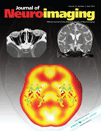
JOURNAL OF NEUROIMAGING
Charting New Territories in Medical ImagingJOURNAL OF NEUROIMAGING, published by Wiley, serves as a premier platform for advancing knowledge in the fields of neurology, radiology, and clinical imaging. With its ISSN 1051-2284 and E-ISSN 1552-6569, the journal spans influential research dating from 1991 to 2024, making it an essential resource for professionals and researchers engaged in neuroimaging. It holds a commendable position in Quartiles—ranking Q2 in both Medicine (miscellaneous) and Neurology (clinical), and Q1 in Radiology, Nuclear Medicine, and Imaging as of 2023. The journal's standing in the Scopus rankings, particularly its percentile ranks of 68th and 60th in their respective categories, underscores its impact within the academic community. Although it does not offer open access, it remains pivotal for disseminating high-quality, peer-reviewed research that enriches the understanding of neuroimaging techniques and their clinical applications. The JOURNAL OF NEUROIMAGING is an invaluable resource for scholars seeking to contribute to the evolving landscape of medical imaging and neurodiagnosis.
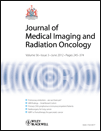
Journal of Medical Imaging and Radiation Oncology
Advancing the Frontiers of Medical Imaging and OncologyJournal of Medical Imaging and Radiation Oncology, published by WILEY, is a pivotal resource in the fields of oncology and medical imaging. With an impact factor reflective of its commitment to advancing research, the journal has maintained a robust reputation since its inception in 2008 and continues to thrive through 2024. It is indexed with an insightful ranking, with a Q2 classification in Radiology, Nuclear Medicine and Imaging, affirming its importance in these disciplines. This journal not only serves as an open access platform, allowing extensive reach and accessibility, but also fosters a scholarly community dedicated to the innovation of imaging techniques and radiation oncology practices. As a key player in disseminating crucial findings and advancements, it appeals to researchers, clinicians, and students who aim to contribute to the evolving landscape of medical imaging and cancer treatment methodologies. The journal is based in Australia, at 111 River St, Hoboken, NJ, and invites submissions that push the boundaries of current knowledge in this critical area of healthcare.
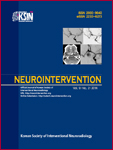
Neurointervention
Pioneering Insights in Neurointerventional PracticesNeurointervention, published by the Korean Society of Interventional Neuroradiology (KSIN), is a distinguished Open Access journal that has been a pivotal resource in the fields of neurology and radiology since its inception in 2011. With an ISSN of 2093-9043 and E-ISSN 2233-6273, this journal serves as a vital platform for disseminating innovative research, clinical practices, and advancements in interventional neuroradiology. Situated in South Korea, Neurointervention enjoys a respectable standing in scholarly circles, currently categorized as Q3 in both Neurology (clinical) and Radiology, Nuclear Medicine and Imaging for 2023. It features rigorous peer-reviewed articles, aimed at fostering knowledge exchange and improving patient outcomes in these dynamic fields. As it converges research endeavors from 2019 to 2024, the journal is essential for researchers, clinicians, and students aspiring to stay at the forefront of neurointerventional techniques and methodologies.
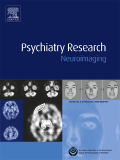
PSYCHIATRY RESEARCH-NEUROIMAGING
Exploring the Complexities of Brain and BehaviorPSYCHIATRY RESEARCH-NEUROIMAGING, published by Elsevier Ireland Ltd, stands at the intersection of neuroscience, psychiatry, and medical imaging, specializing in the latest advancements in neuroimaging techniques and their applications in psychiatric research. With a robust history since 1990, this esteemed journal features original research, reviews, and case studies that contribute significantly to the understanding of brain function in mental health disorders. Holding a notable Impact Factor and classified in Q2 for the fields of Neuroscience and Psychiatry and Q1 for Radiology, it serves as a vital resource for scholars and practitioners seeking to advance their knowledge in these domains. The journal is indexed in major databases, enhancing visibility and accessibility for global researchers. While it currently does not follow an open-access model, its reputable standing in Scopus ranks, alongside its targeted scope, makes it indispensable for those invested in neuroimaging research and its implications in psychiatry.
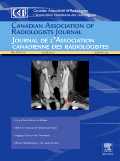
CANADIAN ASSOCIATION OF RADIOLOGISTS JOURNAL-JOURNAL DE L ASSOCIATION CANADIENNE DES RADIOLOGISTES
Transforming Practice: Essential Reading for Radiology ProfessionalsCanadian Association of Radiologists Journal - Journal de l'Association Canadienne des Radiologistes, published by SAGE Publications Inc, stands as a vital resource in the realms of Radiology and Medicine. With an ISSN of 0846-5371 and an E-ISSN of 1488-2361, this esteemed journal offers insightful research articles and reviews that contribute to the advancement and practice of radiology, benefiting both seasoned professionals and emerging scholars. Holding a commendable Q2 ranking in both the fields of Medicine (miscellaneous) and Radiology, Nuclear Medicine and Imaging, the journal is recognized for its impactful publications, positioning its content within the top 40% of global research outputs. Since its inception in 1973 and continuing through to 2024, it has consistently provided a platform for cutting-edge research and clinical innovations, facilitating knowledge transfer among practitioners and educators. The journal’s significant influence is evidenced by its Scopus rank of #67 out of 333 in its category, placing it in the 80th percentile of academic excellence. Although it does not offer open access, its contributions are critical for advancing the field, making it essential reading for all those invested in the evolution of radiological sciences.

ANNALS OF NUCLEAR MEDICINE
Illuminating Innovations in Imaging and TherapyANNALS OF NUCLEAR MEDICINE is a prominent academic journal dedicated to the field of nuclear medicine, published by Springer. With a rich publication history dating back to 1987 and continuing through 2024, this journal serves as a vital resource for researchers and practitioners interested in the latest developments in nuclear imaging, radiopharmaceuticals, and therapeutic applications. Ranked in the second quartile (Q2) for both Medicine (miscellaneous) and Radiology, Nuclear Medicine, and Imaging categories in 2023, it maintains a strong position in the academic community, with an impressive Scopus rank of #104 out of 333 in its field, placing it in the 68th percentile. The journal is not open access but offers a range of access options through institutional or individual subscriptions, ensuring that critical research findings reach a wide audience. By fostering high-quality, peer-reviewed articles, ANNALS OF NUCLEAR MEDICINE plays a crucial role in advancing the understanding and practical application of nuclear medicine techniques, making it an essential journal for professionals and students aiming to stay at the forefront of this evolving discipline.